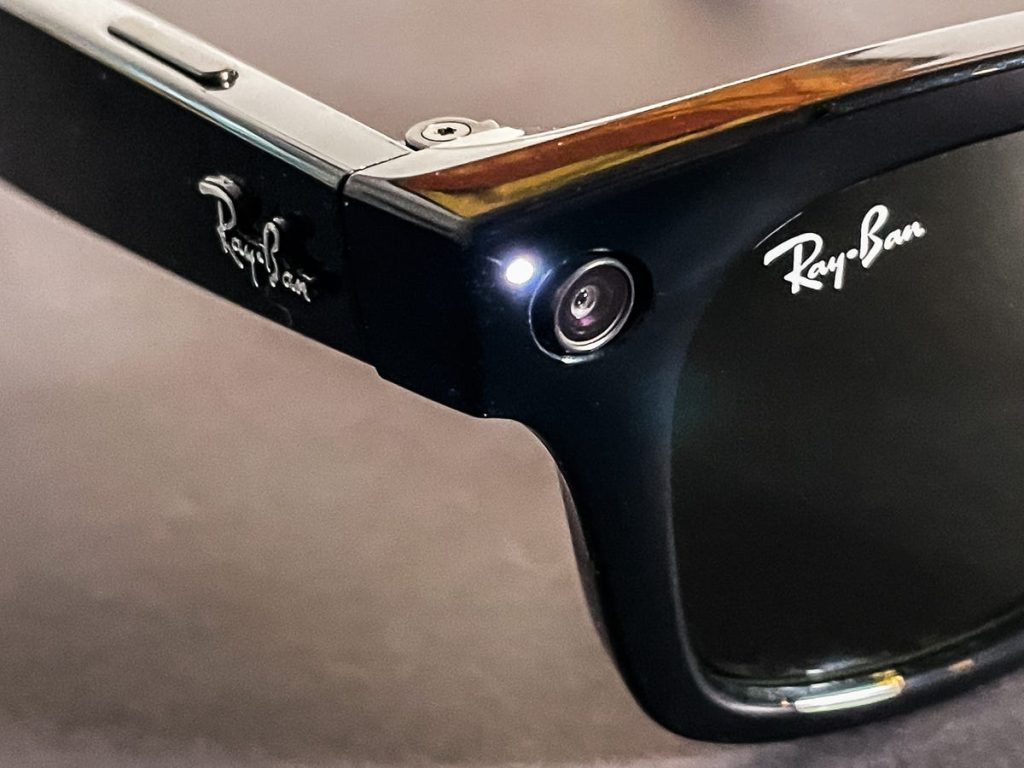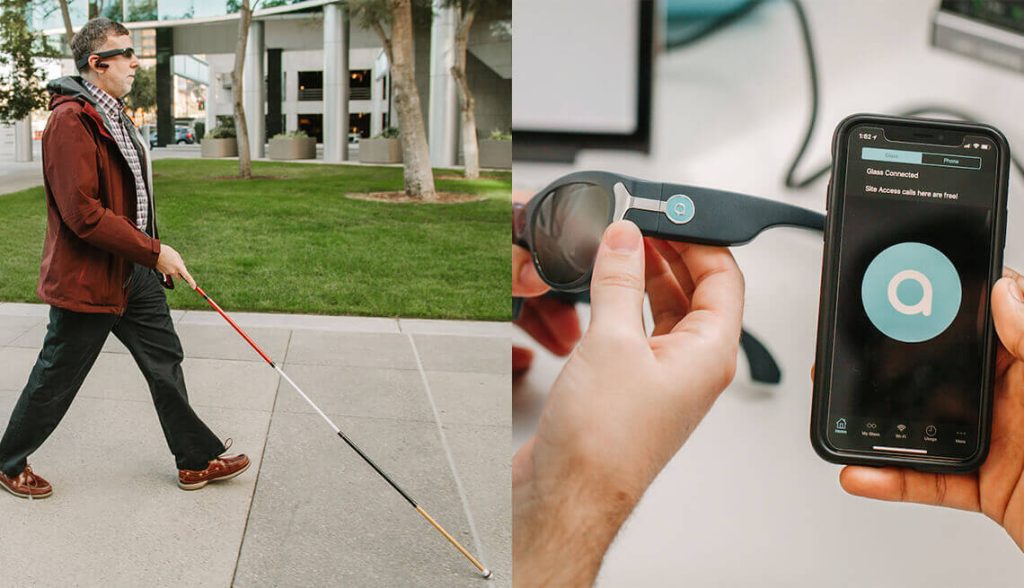Wearable technology with transparent screens is known as smart glasses. They overlay digital data on top of the real world. Smart glasses for blind offer innovative assistive technology to those who are visually impaired. This technology disregards conventional mouse and keyboard setups in favour of wearables.
Smart ai glasses come equipped with cameras and sensors to record visual data. Strong microprocessors handle the processing of this data. Next, the outcomes are presented on the lenses in a way that best suits each user’s requirements.
For people with vision impairments, these spectacles can significantly increase accessibility. For instance, turning printed text into spoken sounds to make reading easier, computer tools. Object recognition facilitates users’ identification of nearby objects.
Social connections can be improved with facial recognition, which can identify known faces. Real-time guiding is another benefit of navigation assistance, which aids users in avoiding obstacles and following instructions.
Additionally, smart glasses for blind person can be integrated with smartphones and other mobile devices, increasing their utility and practicality for everyday use.
Function Of AI Smart Glasses
Smart glasses operate similarly to tiny cameras for those who are blind or visually impaired. They take a picture of the user’s environment and convert it into constructive criticism. Users have the option to read text labels aloud or hear descriptions of things. Some devices even offer vibrations to help with navigation.
Smart glasses technology can help people who have very low vision as well. These glasses can enhance sight because of their smart visual displays. They can also translate what is seen into auditory or tactile feedback, encouraging a more self-sufficient way of living.
AI is an important component of smart ai glasses made by brands like Envision, which employ Aira AI. Some brands might employ no AI at all, or very little. Certain smart glasses allow users to communicate with actual individuals who can offer them real-time, tailored advice.
Although this service might be beneficial, it might also have drawbacks similar to those of human support. The market for smart glasses has also been penetrated by established companies such as Bose and Ray-Ban. Their designs are infused with the values of their trademark.

In August, Ray-Ban Stories was selected as the Best Cleanliness pick for smart glasses. On the other hand, Bose dropped the majority of its frame range because of poor audio quality and conflicting evaluations.
Despite these obstacles, well-known corporations like Amazon and emerging tech startups persist in creating their own iterations of smart glasses technology. The goal of this continual innovation is to make things more accessible and better for those who are blind or visually impaired.
Important Technological Elements of Smart Low-Vision AI Glasses
Even those with great eyesight can benefit from some of the useful functions that smart glasses offer. However, some of the more beneficial smart glasses functions are especially for those who have limited eyesight or visual impairment. These characteristics include:
• Object Recognition in Real-Time
With the help of this function, users may identify and communicate with objects in their surroundings, including people, products, and landmarks. Earpieces or headphones are used to provide verbal descriptions.
• Guidance Assistance
For easy vision, these smart glasses for blind person function to enlarge text and objects. Besides, smart glasses use GPS and navigation technology to provide real-time guidance and directions. They assist users in safely navigating both interior and outdoor settings.
Technologies for Facial Recognition
The use of facial recognition technology facilitates face recognition. When a known person is in the nearby areas, it notifies the user. Users can interact with greater assurance in social settings because of this functionality.
At the moment, the glasses are limited to identifying faces that are registered in their database. This is a result of the technology’s requirement to match accessible data with face feature matching. Nowadays, the majority of smart glasses lack large facial recognition databases.
Because of this constraint, the system cannot function properly unless users first enter faces into it. But when users identify faces they recognize, they are given useful information about those people. This decreases fear in strange circumstances and improves social relations.
All things considered, smart glasses with facial recognition technology provide users with invaluable help.
o Integration Using Cell Phones

The majority of smart eyewear available now works with smartphones. With this kind of connectivity, users can use gestures or voice instructions to operate their mobile devices hands-free. Additionally, smartphones and smart glasses for blind can be used for:
o Interaction
Usually, smart glasses use Bluetooth to link to the user’s phone. Therefore, they can share instructions and information. Due to processing limits and a lack of interfaces, smart glasses themselves usually cannot make calls or run social media applications directly. They can use a cell phone to operate it and access communication capabilities like voice assistants. Thus, they can answer calls, transcribe text messages or posts on social media, and hear alerts when new calls or messages are received.
o Power Processing
Many smart glasses lack the processing capacity necessary to complete complicated tasks by themselves. For tasks like responding, understanding data, and executing apps, they depend on the processing capacity of the phone.
o Information Exchange
The phone serves as the main hub. It collects information from the glasses and transmits data to the glasses for presentation.
Bottom Line
People with low eyesight can more independently explore their environment via smart glasses for blind. They facilitate information access and day-to-day participation. People who are completely blind or have severe vision loss could find certain features difficult to use. Still, additional progress in smart eyewear technology promises to increase accessibility even more. For this reason, smart glasses are a crucial tool in helping people with disabilities overcome obstacles. More people will profit from these cutting-edge advantages as technology advances.


